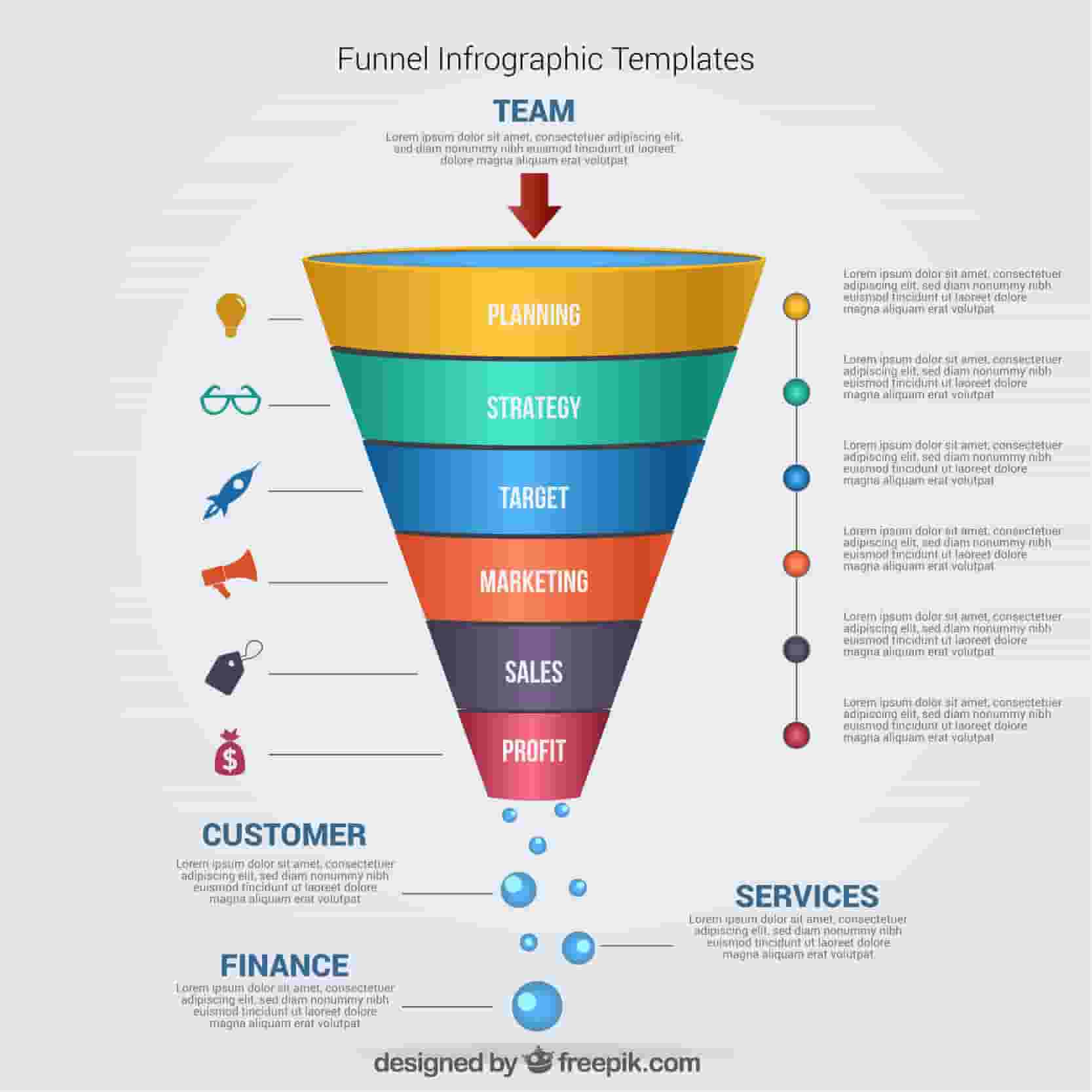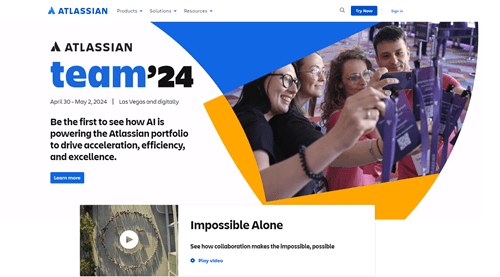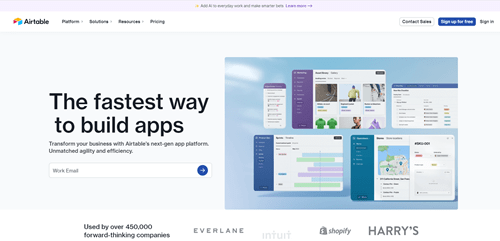
Mastering the SaaS Sales Funnel: A Roadmap to Revenue Growth
In the dynamic world of Software as a Service (SaaS), a well-designed sales funnel is the cornerstone of successful customer acquisition and revenue growth. A seamless and optimized sales funnel becomes a strategic asset as SaaS businesses strive to attract, nurture, and convert prospects into loyal customers. This comprehensive guide delves into the intricacies of building and managing an effective SaaS sales funnel, equipping you with the knowledge and strategies to drive sustained growth and profitability.
What is a Sales Funnel?
A sales funnel is a graphic that illustrates the path a prospective client takes from first learning about a good or service to making a purchase. It shows a potential customer’s several phases: awareness, interest, contemplation, intent, evaluation, and purchase. By comprehending and refining every funnel phase, enterprises may optimize conversions and reduce attrition.
How to Build a SaaS Sales Funnel:
Building an effective SaaS sales funnel requires a strategic approach that aligns with your target market, product offerings, and business objectives. Here are the key steps to follow:
Clarify Your Target Audience:
Delineate your optimal customer avatars, dilemmas, and hurdles they strive to overcome with your SaaS offering.
Chart the Customer Expedition:
Grasp the customary expedition your potential clientele embarks upon, from initial recognition to becoming a subscribing patron, and pinpoint potential points of interaction and decision junctures.
Forge Content and Communication:
Craft compelling content and communication that resonates with your audience at each funnel phase, addressing their distinct requisites and anxieties.
Execute Lead Generation Approaches:
Harness diverse lead generation tactics like content marketing, search engine optimization (SEO), paid promotions, and social media outreach to kindle awareness and curiosity.
Cultivate and Assess Prospects:
Establish mechanisms for cultivating leads, such as email campaigns, educational assets, and tailored correspondence, to escort prospects through the funnel and assess their readiness for sales conversion.
Enhance the Sales Mechanism:
Refine your sales mechanisms, encompassing lead administration, demonstrations, proposal formulation, and contract bargaining, to ensure a fluid and effective customer journey.
Nurture Customer Triumph:
Prioritize customer initiation, instruction, and persistent assistance to spur retention, upselling opportunities, and favorable referrals.
The Main Stages of SaaS Development:
In Software as a Service (SaaS), the evolution from inception to growth is a nuanced process encompassing various stages. Let’s delve deeper into each phase:
1. Discovery:
In this first stage, prospective customers travel the world searching for solutions and move on to your SaaS service, among many alternatives. They become aware of your solution because they see its capacity to meet their requirements. This stage is essential because it lays the groundwork for subsequent involvement.
2. Evaluation:
As prospects delve deeper into their quest for the ideal solution, they actively engage in research and comparison. They meticulously analyze your offering, weighing it against available alternatives. They aim to gather sufficient information to make an informed decision that aligns with their objectives and preferences.
3. Purchase:
Upon completing the evaluation phase, qualified leads reach a pivotal moment where they must decide to commit. This decision involves subscribing to your SaaS solution and finalizing the transaction. It marks the transition from potential interest to concrete action, signifying a significant milestone in the customer journey.
4. Onboarding:
Once the transaction is complete, new customers enter the onboarding phase. This stage is dedicated to familiarizing them with your product, providing comprehensive training, and guiding them toward realizing tangible value. Effective onboarding sets the stage for long-term engagement and customer satisfaction.
5. Retention and Expansion:
The journey doesn’t end with customer acquisition; it merely evolves. Existing customers are nurtured and supported to ensure their continued satisfaction and loyalty. Moreover, they are presented with opportunities for further engagement, whether through upselling, cross-selling, or expanding their usage of your SaaS solution. This phase is essential for fostering ongoing relationships and driving sustainable growth.
6. Innovation and Adaptation:
In today’s dynamic landscape, innovation and adaptation are indispensable for staying ahead of the curve. As technology evolves and market dynamics shift, SaaS providers must continuously innovate their offerings to meet changing customer needs and preferences. This phase involves staying attuned to market trends, soliciting customer feedback, and iterating on your product to maintain relevance and competitiveness.
7. Community Building:
Creating a thriving community around your SaaS system can greatly improve its value proposition beyond transactions and features. Conversations with clients in forums, user groups, and events promote information sharing and a feeling of community. In addition to fostering brand advocacy, a vibrant community offers priceless insights for innovation and product enhancement.
8. Data-Driven Optimization:
Data is a treasure trove of undiscovered insights. Using analytics and customer input, SaaS suppliers can optimize many product parts, such as feature development and user experience. Data-driven decision-making makes continuous improvement and refinement possible, guaranteeing that your SaaS solution is always precisely calibrated to satisfy client needs.
Crafting a Marketing Funnel Precedes Your Sales Funnel:
Before delving into the complexities of the sales funnel, it’s crucial to establish a sturdy foundation with a dynamic marketing funnel. This strategic approach is essential for nurturing prospects, igniting interest, and guiding them toward conversion. Here’s a comprehensive guide on how to construct a formidable marketing funnel:
Generate High-Quality Content:
At the core of every successful marketing funnel lies captivating content that speaks directly to your target audience. High-quality content is the linchpin of your marketing strategy, whether it’s informative blog posts, engaging videos, or visually appealing infographics. By providing valuable insights, addressing pain points, and showcasing your expertise, you can captivate your audience’s attention and earn their trust.
Optimize Website for Search Engines:
Being visible is essential in the huge world of the internet. Search engine optimization is crucial to attracting organic traffic and qualified leads to your funnel. Trying-and-true SEO methods like meta tags, keyword optimization, and targeted backlinking can greatly improve your website’s position on search engine results pages (SERPs). As a result, you become more visible online and have a better chance of drawing in customers actively looking for your company’s services.
Harness the Power of Social Media:
Social media platforms are effective tools for increasing brand awareness and developing deep connections with your audience in today’s connected world. With billions of users globally, social media sites like Facebook, Instagram, LinkedIn, and Twitter provide unmatched chances to expand your brand’s reach, interact personally with your audience, and build a thriving community around your goods or services. You can position your brand as a reliable authority in your sector by regularly posting insightful material, communicating with your fans, and participating in pertinent discussions.
Create Compelling Lead Magnets:
Lead magnets are enticing incentives used to get prospects to enter your marketing funnel, in addition to helpful content. These could include free e-books, instructions that can be downloaded, invitation-only webinars, or coupon vouchers. Offering priceless materials in return for contact details helps you gather leads and establishes the value your company offers, which encourages more interaction and conversion.
Implement Email Marketing Campaigns:
It’s crucial to nurture leads with focused email marketing campaigns after you’ve obtained them. With segmented and personalized email sequences, you can address certain pain points, provide pertinent content, and assist prospects as they move through the funnel. Email marketing is still a highly effective way to promote customer success stories, welcome new subscribers, and educate readers. It can also be used to welcome visitors and encourage them to subscribe.
Analyze and Iterate:
An effective marketing funnel is a dynamic system that needs to be continuously optimized and monitored. Tracking important metrics like website traffic, conversion rates, and engagement levels can help you find areas for development and provide insightful information about how well your funnel is working. A data-driven plan enables you to adapt and optimize your marketing funnel to maximize its impact and promote sustainable growth, whether changing your SEO methods, social media strategy, or content strategy.
What Steps Make Up a SaaS Sales Funnel?
Awareness:
Picture this: your potential customers are out there, navigating the vast digital landscape, and amidst the noise, they stumble upon your SaaS solution. This stage marks the first point of contact, where prospects become aware of your offering through various marketing channels – perhaps a compelling social media ad, an enlightening blog post, or a captivating email newsletter.
Interest:
Ah, the spark of curiosity! Intrigued by your solution, prospects begin to delve deeper, engaging with your content, exploring your website, and seeking more information about your offer. They’re captivated by your value proposition, and their interest is piqued as they envision how your SaaS solution could address their pain points and propel their endeavors forward.
Consideration:
Now, it’s time for a closer examination. Prospects transition from mere curiosity to active evaluation as they meticulously scrutinize your SaaS solution alongside competitors. Armed with a checklist of requirements and a clear understanding of their needs, they weigh the pros and cons, seeking the perfect fit that aligns seamlessly with their objectives.
Intent:
The wheels are in motion, and qualified leads are ready to plunge. With intent bubbling beneath the surface, they express their desire to purchase and quest for additional details, demos, or pricing information. They’re on the verge of deciding but crave that final nudge to solidify their choice.
Evaluation:
The crucial moment is approaching. Leads get their hands dirty and thoroughly evaluate your SaaS offering. They review each feature, read over each clause, and negotiate the terms until they meet their needs. Finding common ground is a delicate dance involving give-and-take between the two sides.
Purchase:
Drumroll, please! With negotiations settled and terms agreed upon, leads leap and officially convert into paying customers. They confidently navigate the subscription process, knowing they’ve made the right choice in selecting your SaaS solution to address their needs.
Onboarding and Adoption:
Welcome aboard! As new customers enter the fold, it’s time to roll out the red carpet and ensure a smooth onboarding experience. They’re eager to dive in, explore the intricacies of your SaaS solution, and unlock its full potential. Through comprehensive training and unwavering support, you pave the way for successful adoption and value realization.
Retention and Expansion:
But hold on, this is just the beginning of the voyage! Your SaaS firm depends on its current clients; therefore, maintaining a positive relationship with them is essential. You keep giving them unmatched service, anticipate their changing demands, and give them chances to increase their usage or engage in upselling or cross-selling. The mutual gain and expansion cycle keeps your SaaS business successful over time.
SaaS Sales Funnel Examples:
HubSpot:
HubSpot’s sales funnel is designed to attract and nurture leads through its inbound marketing methodology, leveraging content, SEO, and lead nurturing campaigns before transitioning them to the sales team for demos and closing.
Salesforce:
Salesforce’s sales funnel drives awareness through thought leadership content, webinars, and events. This is followed by lead qualification, product demos, and consultative selling to enterprise customers.
Zoom:
Zoom’s freemium model attracts users to its free plan, while its sales funnel focuses on converting free users to paid plans through in-product prompts, targeted marketing campaigns, and sales outreach.
SaaS Sales Funnel Metrics:
Website Traffic and Conversion Rates:
Consider your website to be your company’s busy online shop. By monitoring the number of visitors and the percentage of them who convert into leads, you can obtain crucial insights into the efficacy of your online presence. It’s not only about drawing in visitors’ eyes; it’s also about capturing their emotions and thoughts and persuading them to take that vital action.
Lead Velocity Rate:
Ah, the heartbeat of your sales funnel! The lead velocity rate measures the pulse of new leads entering your funnel over a specific period. Like a steady stream flowing into a river, a healthy lead velocity rate signals a robust flow of potential customers, fueling the engine of your sales pipeline.
Marketing Qualified Leads (MQLs):
Consider MQLs to be the treasures that your marketing has uncovered. These are the prospects that fit your predetermined marketing qualification criteria in addition to expressing interest in your SaaS service. You may assess the success of your marketing initiatives and improve your targeting techniques to draw in high-quality prospects by keeping a close eye on MQLs.
Sales Qualified Leads (SQLs):
Let’s now distinguish the good from the bad. The best leads are SQLs; these are prospects who fit your sales team’s strict qualifying requirements and your marketing criteria. These potential customers are prepared and eager to start the sales process, carrying sincere interest in what you offer and intent.
Customer Acquisition Cost (CAC):
Every acquisition comes at a cost in the pursuit of growth. CAC encapsulates the investment required to acquire a new customer, encompassing expenses incurred across marketing and sales channels. By calculating CAC, you gain clarity into the efficiency of your customer acquisition efforts and can optimize your strategies to achieve a more favorable return on investment.
Customer Lifetime Value (CLV):
Ah, the enduring romance between your SaaS offering and your clientele! CLV gives you an idea of how much money a customer can expect to make from you throughout their relationship. Knowing your customers’ lifetime worth will help you better target your retention campaigns, cultivate client connections, and promote loyalty beyond purchases.
Churn Rate:
Similar to the tides, your SaaS solution’s churn rate indicates the number of users leaving within a given time frame. This sobering metric shows how healthy your subscriber base is and how many customers leave. By reducing attrition and improving customer happiness, you can secure long-term growth and strengthen the foundation of your SaaS business.
Pricing Your SaaS Contracts:
In the intricate dance of SaaS sales, pricing your contracts takes center stage, profoundly influencing customer acquisition, retention, and, ultimately, the bottom line. Let’s explore some common SaaS pricing models and unravel their intricacies:
Flat-Rate Pricing:
Imagine this as the “one-size-fits-all” approach to pricing. With flat-rate pricing, customers pay a fixed monthly or annual fee for unrestricted access to the SaaS solution. It’s simplicity at its finest – no fuss, no frills, just a straightforward pricing structure that offers customers predictability and ease of budgeting.
User-Based Pricing:
Here’s where the concept of “pay-per-head” comes into play. With user-based pricing, the fees correlate directly with the number of users or seats accessing the application. Whether you’re a solo entrepreneur or a bustling enterprise with a legion of employees, your pricing scales with your usage, ensuring fairness and scalability for all.
Usage-Based Pricing:
Ah, the beauty of paying only for what you use! In usage-based pricing, customers are billed based on their actual usage of the SaaS solution – storage, bandwidth, or API calls. It’s a pay-as-you-go model that offers flexibility and cost-effectiveness, aligning closely with the fluctuating needs of modern businesses.
Feature-Based Pricing:
Welcome to the land of options! With feature-based pricing, customers can pick from various pricing tiers, each offering a unique combination of features and functionality. Whether you’re a bare-bones minimalist or a feature-hungry power user, there’s a pricing tier tailored to suit your specific needs and budget.
Hybrid Pricing:
Why settle for one when you can have it all? Hybrid pricing combines the best of multiple worlds, offering customers a choice of pricing models. Whether a flat fee complemented by usage-based charges or a user-based pricing structure with added features, hybrid pricing provides the ultimate flexibility to cater to diverse customer preferences.
Why the Sales Funnel is So Important for SaaS Providers:
In the bustling landscape of Software as a Service (SaaS), the sales funnel stands as a beacon of guidance, steering providers toward success. Let’s delve deeper into why this funnel is not just important but indispensable:
Scalable Customer Acquisition:
Imagine the sales funnel as a well-oiled machine, efficiently churning out leads and converting them into loyal customers. For SaaS providers, this means tapping into a scalable mechanism that streamlines acquiring and converting new customers, paving the way for sustainable growth and expansion.
Predictable Revenue Streams:
Ah, the holy grail of business – predictability. Simply optimizing each sales funnel stage, SaaS businesses can peer into the crystal ball and forecast their revenue streams more accurately. This foresight enables them to plan and allocate resources more effectively, mitigating risks and maximizing opportunities for financial stability and growth.
Enhanced Customer Lifetime Value:
At the heart of every successful SaaS venture lies a thriving ecosystem of satisfied customers. A seamless journey through the sales funnel, coupled with robust customer success strategies, fosters deeper engagement, satisfaction, and loyalty. As a result, customers stick around longer, churn less frequently, and unlock greater value over their lifetime, enriching both their experience and the provider’s bottom line.
Data-Driven Optimization:
Ah, the power of numbers! Sales funnel metrics serve as a treasure trove of insights, offering a bird’s-eye view of performance across each journey stage. Armed with this data, SaaS providers can pinpoint bottlenecks, identify areas for improvement, and fine-tune their strategies to perfection. It’s a continuous cycle of optimization driven by data-driven decision-making, propelling providers towards greater efficiency and effectiveness.
Competitive Advantage:
In a crowded marketplace teeming with competitors, differentiation is key. An optimized sales funnel becomes the secret weapon in a SaaS provider’s arsenal, setting them apart by delivering a superior customer experience and driving higher conversion rates. It’s the difference between blending in with the crowd and standing out as a beacon of excellence in the eyes of prospective customers.
Case Studies of Successful Sales Funnels in SaaS Businesses:
Slack:

Slack’s sales funnel thrives on freemium adoption and viral expansion principles. By offering a compelling free plan, Slack entices teams to onboard effortlessly and experience the value of its collaboration platform firsthand. Strategic marketing campaigns, product prompts, and a dedicated sales team cater to the needs of enterprise clients, further fueling Slack’s exponential growth.
Atlassian:

Atlassian’s sales funnel balances self-service and assisted selling, catering to a diverse customer base. Content marketing initiatives drive awareness and educate potential users, while free trials provide hands-on experience with Atlassian’s suite of tools. Leveraging its extensive customer community, Atlassian fosters engagement and loyalty, positioning itself as a trusted partner in the software development landscape.
Airtable:

Airtable’s sales funnel embodies the essence of product-led growth, centered around empowering users to harness the full potential of its versatile database platform. A generous free plan allows users to explore and experiment with Airtable’s features, while in-app prompts gently guide them towards paid plans tailored to their specific needs and usage patterns. Targeted outreach efforts amplify Airtable’s conversion rates, driving sustainable growth and revenue.
The Role of Customer Success in SaaS Sales Funnel Optimization:
In the intricate dance of SaaS sales funnel optimization, customer success emerges as a guiding force, shaping the journey from onboarding to expansion:
Onboarding and Adoption:
Customer success teams ensure new users have a seamless onboarding process by helping them with the setup and configuration steps. Their tailored training sessions and proactive assistance pave the way for the effective adoption and seamless integration of the SaaS solution into the customer’s workflow.
Retention and Expansion:
As customers move through their subscription lifecycle, customer success teams nurture the relationship, offering ongoing support and assistance. They proactively address customer concerns, identify pain points, and uncover opportunities for upselling and cross-selling. This approach fosters loyalty and drives incremental revenue growth. Customer success teams maximize lifetime value through targeted outreach initiatives and tailored recommendations. They solidify the SaaS provider’s position as a trusted partner in the customer’s journey toward success.
Future Trends in SaaS Sales Funnel Management:
1. Increased Automation and AI Integration:
Prepare to greet our AI rulers! As AI sales automation becomes a foundational layer in modern revenue operations, automation of lead scoring, nurturing, and funnel stage optimization is no longer theoretical but essential. Artificial intelligence and machine learning now analyze massive data sets in real time to uncover actionable insights, enabling SaaS providers to personalize interactions, streamline workflows, and drive conversions with unprecedented efficiency.
2. Omnichannel Engagement:
Say goodbye to siloed interactions and hello to seamless omnichannel experiences! SaaS businesses must embrace a holistic approach to engagement, leveraging multiple touchpoints such as websites, social media, messaging apps, and more. By orchestrating cohesive and consistent interactions across channels, SaaS providers can engage prospects and customers at every funnel stage, fostering deeper connections and driving conversion.
3. Account-Based Marketing (ABM):
It’s time to roll out the red carpet for your VIPs! Account-based marketing (ABM) strategies will take center stage as SaaS providers focus on targeting and nurturing high-value accounts. Through personalized, multi-channel campaigns, SaaS providers will tailor their messaging and outreach efforts to resonate with key decision-makers’ unique needs and preferences, driving engagement and lasting relationships.
4. Product-Led Growth:
Let your product do the talking! Product-led growth will emerge as a dominant strategy for SaaS providers as they seek to drive user activation, adoption, and conversion through the inherent value of their offerings. Free trials, freemium models, and in-product prompts will take center stage, enticing users to explore and experience the full potential of the SaaS solution. SaaS providers can accelerate growth and foster customer loyalty by prioritizing user-centric experiences and delivering tangible value.
5. Customer Success Automation:
Say hello to the era of automated customer success! Customer success teams will harness the power of automation tools and predictive analytics to proactively identify at-risk customers, deliver personalized support, and uncover expansion opportunities. By leveraging data-driven insights, SaaS providers can anticipate customer needs, mitigate churn, and drive revenue growth, all while delivering exceptional experiences that keep customers coming back for more.
FAQs:
What is the difference between a marketing funnel and a sales funnel?
A marketing funnel focuses on generating awareness and interest in a product or service, while a sales funnel focuses on nurturing and converting qualified leads into paying customers.
How can SaaS businesses improve their lead conversion rates?
Improving lead conversion rates involves optimizing each funnel stage, including compelling content and messaging, effective lead nurturing, and streamlining the sales process for a seamless customer experience.
What role does content marketing play in the SaaS sales funnel?
Content marketing is crucial for driving awareness, interest, and consideration in the early stages of the funnel. High-quality, educational content can attract and nurture prospects through the buyer’s journey.
How can SaaS providers leverage product-led growth strategies?
Product-led growth strategies involve offering free trials, freemium models, and in-product prompts to drive user activation, adoption, and conversion. This approach allows prospects to experience the product’s value before purchasing.
What are the key metrics to track for a successful SaaS sales funnel?
Key metrics include website traffic, lead conversion rates, marketing qualified leads (MQLs), sales qualified leads (SQLs), customer acquisition cost (CAC), customer lifetime value (CLV), and churn rate.
How can SaaS businesses leverage customer success to optimize their sales funnel?
Customer success teams can optimize the sales funnel by delivering exceptional onboarding experiences, providing proactive support, identifying upsell and cross-sell opportunities, and fostering long-term customer relationships.
Conclusion:
Understanding the sales funnel is crucial to achieving sustained development and profitability in the cutthroat SaaS market. SaaS companies can maximize client acquisition, retention, and growth by comprehending the nuances of each funnel stage, utilizing data-driven insights, and putting best practices into effect. Staying ahead of the curve in the ever-evolving market will require embracing emerging trends like omnichannel engagement, automation, and product-led growth. Recall that a strategically sound and well-designed SaaS sales funnel may distinguish your company and set you up for long-term success, not merely as a means of generating income.




